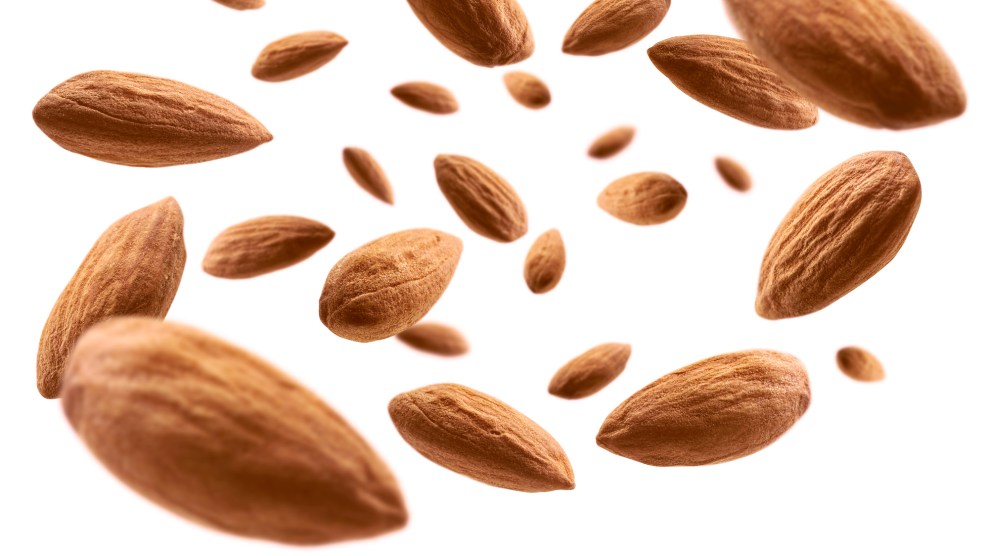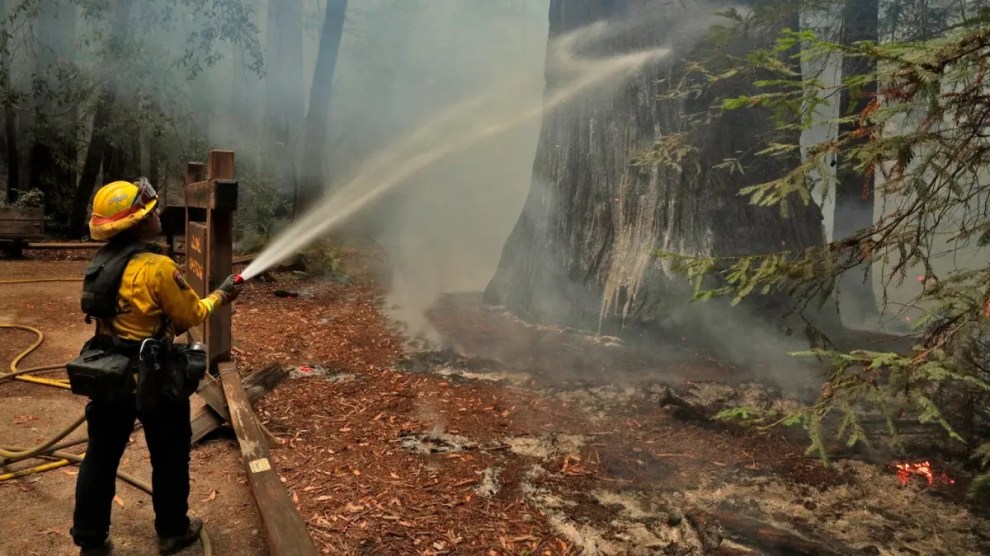
The color of money. Andrey Elkin/iStock/Getty
For farmers in California’s San Joaquin Valley—the Saudi Arabia of nuts—2021 brought many challenges. Scant snowfall in the Sierra Nevada mountain range delivered almost no irrigation water to the region’s vaunted complex of dams and aqueducts. Record-high temperatures baked farm fields. Before this past weekend’s furious storms, California endured its driest year in recorded history.
Yet the region’s ever-expanding and very thirsty almond and pistachio operations are thriving anyway. According to the US Department of Agriculture’s latest projections released this month, 2021 almond production will likely clock in at just 10 percent below last year’s, while the pistachio harvest is expected to hit a record high. In Kern county—the nut industry’s hub, located at the valley’s southern end—”optimism is holding as the year in tree nuts comes into clearer focus,” reports the Bakersfield Californian. That’s because lower almond supply will likely boost prices, more than offsetting reduced output; and pistachio prices could get a boost from a bad year in Iran, California’s main rival for global supremacy in that tasty nut.
So how did the region’s farmers pull off such a lucrative harvest in a blistering-hot, drought-haunted year, largely cut off from irrigation water from the Sierra Nevada? The answer lies under their feet. In short, the valley’s farms have for decades tapped underground aquifers to supplement the dwindling supply of water offered by the mountain range, whose snowpack has declined dramatically in recent decades because of climate change. As their wells drain the aquifers, the ground literally sinks, snarling infrastructure like roads, bridges, and aqueducts. In response, agricultural interests scramble to deepen those very wells, as this startling August dispatch from Mark Arax, the valley’s great chronicler, showed.
As this flow of fast-vanishing groundwater keeps the San Joaquin Valley’s farms humming, chemicals—both naturally-occurring and agriculture–induced—concentrate in the remaining water, creating a toxic water supply for the region’s towns and rural communities, which are largely populated by farmworkers and their families. They also increasingly face the threat of being cut off from home water access altogether, as I demonstrated in a piece last month.
In short, Big Nut managed largely to escape the impact of the drought, passing its burdens on to the people who make the San Joaquin Valley their home. But something will ultimately have to give. The rapid advance of climate change means that the robust annual snowpack the industry has banked on for decades is probably gone forever. Those aquifers, meanwhile, are a fast–disappearing resource. Enjoy those “Wonderful” pistachios while supplies last.

















